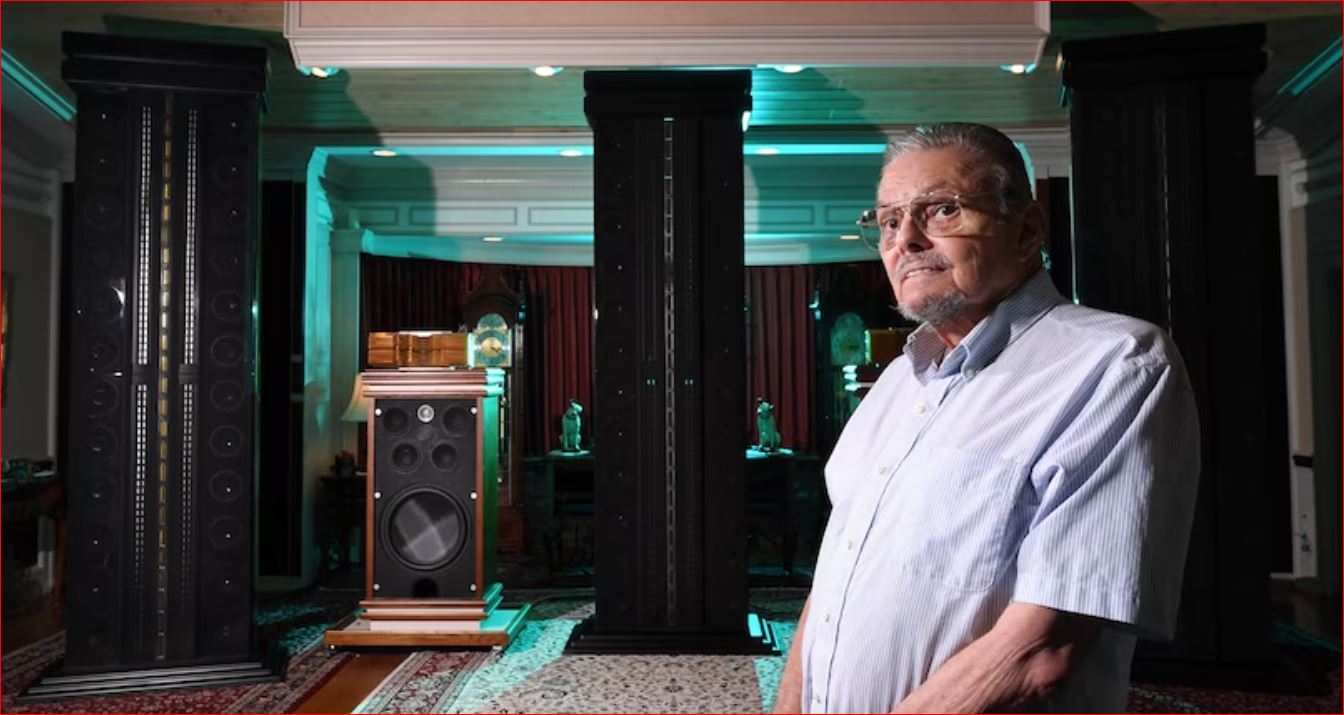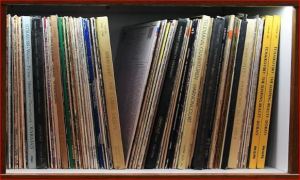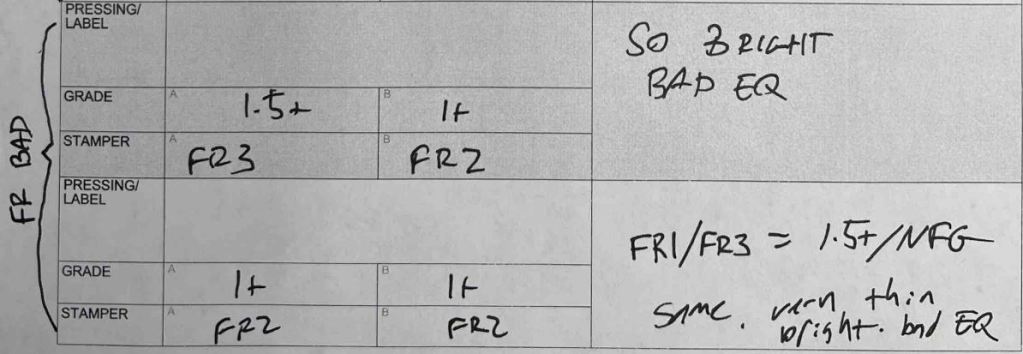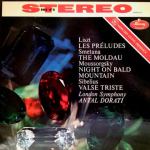
More of the Music of Steely Dan
Reviews and Commentaries for the Music of Steely Dan
Do All the Pressings Have to Sound Like CDs?
The average copy of this digitally recorded, mixed and mastered LP sounds just the way you would expect it to: like a CD. It’s anemic, two-dimensional, opaque, thin, bright, harsh, with little extreme top and the kind of bass that’s all “note” with no real weight, solidity or harmonic structure. Sounds like a CD, right? (That’s the way most of my CDs sound, which is why I rarely listen to them these days.)
But what if I told you that the best copies of The Nightfly can actually sound like a real honest-to-goodness ANALOG recording, with practically none of the nasty shortcomings listed above? You may not believe it, but it’s true.
I heard it myself. I heard a copy sound so natural and correct that I would never have guessed it was digital. On my honor, that’s the truth. The best copies of The Nightfly can actually be shockingly ANALOG sounding.
The listing below is basically a reworked version of the commentary we wrote about Direct Metal Mastering. Almost all the same principles apply, allowing us to easily make the changes necessary to defend The Nightfly. Simply put, the question before the house is: Can this record sound analog? We’ll be taking the affirmative.
The problem with the typical copy of this record is gritty, grainy, grungy sound — not the kind that’s on the master tape, the kind that’s added during the mastering and pressing of the record. When that crap goes away, as it so clearly does on a copy we played recently, it lets you see just how good sounding this record can be. And that means REALLY good sounding.
On most copies, the CD-like opacity and grunge would naturally be attributed to the Digital Recording process. That’s the conventional wisdom, so those with a small data sample (in most cases the size of that sample will be one) could be forgiven for reaching such a conclusion. Based on our findings it turns out to be false.
The bad pressings do indeed sound more like CDs. The best pressings do not.
If you like having your biases confirmed, then by all means, keep your digital-sounding copy and pretend you know why The Nightfly sounds bad on vinyl.
More Conventional Wisdom
All copies of The Nightfly are digitally recorded, mixed and mastered, proving again that the conventional wisdom is simply mistaken. Conventional wisdom is a term of disparagement here at Better Records for this very reason.
What passes for common sense in the world of audiophile record collectors is mostly of little value, if not demonstrably false. In this blog we take great pains to lay out the evidence against this kind of mistaken audiophile thinking in scores if not hundreds of listings.
I believe we are alone in the world of record dealers to do so. In fact we are practically alone in the world of record lovers to do so. That’s a much bigger world, but it’s full of the same misunderstandings and misinformation.
If we have the record in hand that can make our case — not likely with The Nightfly, but you never know — it would be our pleasure to have you hear just what we are talking about for yourself, on your own system.
How Analog Is It?
The shootout winner for this album earned a grade of White Hot and showed not a trace of digital sound. We have never put a White Hot Stamper copy on the site, and it’s doubtful this WHS copy will be going up on the site either, as there is sure to be one of our long-term customers who has it on his Want List.
That said, we will of course have other very good, even superb, copies to sell. The ones we like the best will tend to be the ones that sound the most Analog. The more they sound like the average pressing — in other words, the more CD-like they sound — the lower the sonic grade. Many will not have even one Hot Stamper side and will end up in the trade-in pile.
The best copies sound the way the best copies of most Classic Rock records sound: tonally correct, rich, clear, sweet, smooth, open, present, lively, big, spacious, Tubey Magical, with breathy vocals and little to no spit, grit, grain or grunge.
That’s the sound of analog, and the best copies of The Nightfly have that sound.
(more…)
 More of the music of Jean Sibelius (1865-1957)
More of the music of Jean Sibelius (1865-1957)


 There are a number of lessons to be learned from this fellow’s mistakes.
There are a number of lessons to be learned from this fellow’s mistakes.
 And the FR pressing of the Rachmaninoff record you see pictured above may indeed have the best sound.
And the FR pressing of the Rachmaninoff record you see pictured above may indeed have the best sound.

 The difference between the way we do things and the way others do them boils down to this: We assumed that the original could be the best, and then we tested that assumption and found out we were wrong to assume it.
The difference between the way we do things and the way others do them boils down to this: We assumed that the original could be the best, and then we tested that assumption and found out we were wrong to assume it.





 More of the Music of The Rolling Stones
More of the Music of The Rolling Stones
